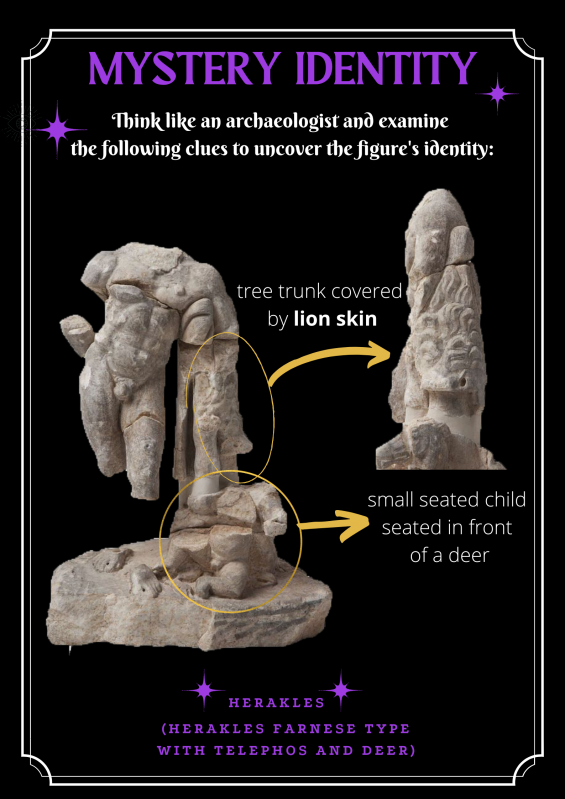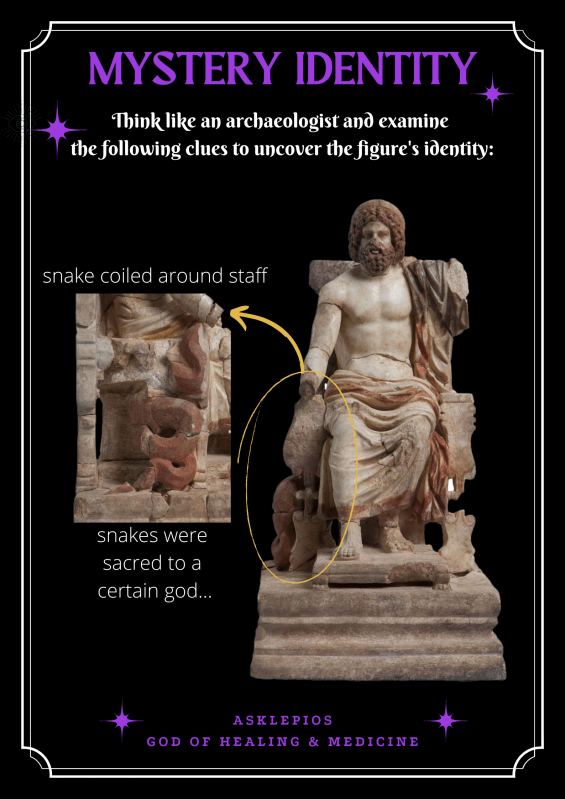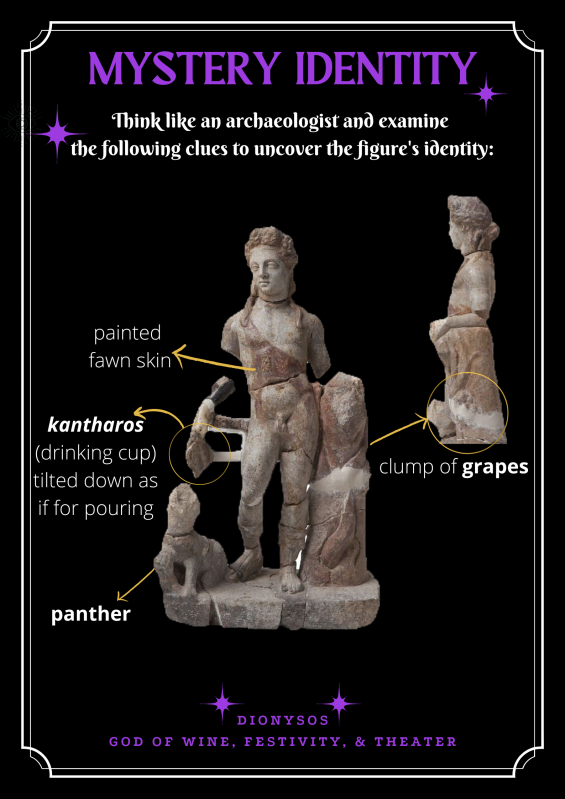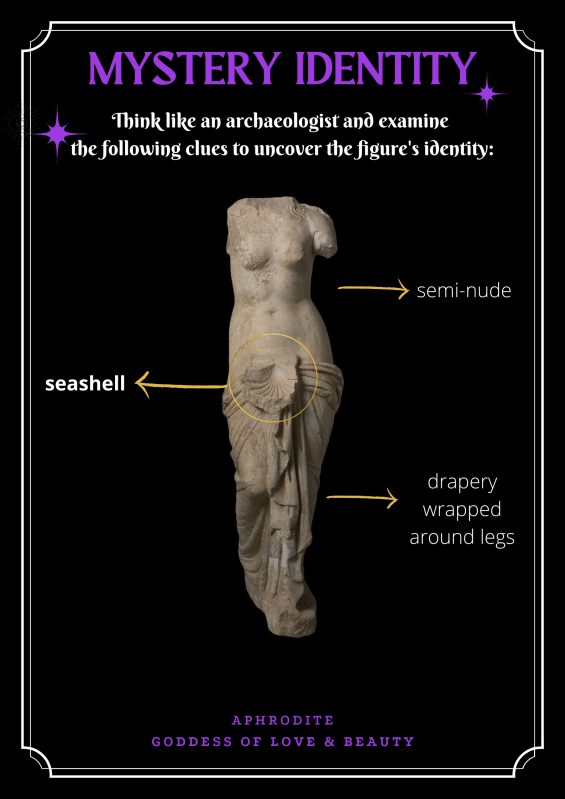Mystery Identity
Most Ancient Greek statues and vase paintings do not list the names of the figures depicted. Archaeologists have to look for clues in order to identify them. Gods and goddesses had certain attributes, or characteristics, that were unique to them. Therefore, when archaeologists identify these attributes, they can almost certainly assign a name to the figure.
Oftentimes, the way that ancient artists depicted a figure or a group of figures was reproduced by multiple artists throughout the Greek world in more or less the same way. We call this a figural "type". Some types include: Hercules Farnese and Aphrodite Hoplismeni. When archaeologists are trying to identify a statue or a vase painting scene, they also rely on figural types that are well-known in Greek art because they were reproduced widely.
This "Mystery Identity" series encourages students to think like archaeologists by looking for clues that will help them identify the names of different Greek statues.
Additional links lead students to online resources where they can learn more about the particular god or goddess and to read more about the artifacts from the Archaeological Museum of Ancient Corinth, Greece.

Mystery Identity #3
- Infographic on Mystery Identity #3
- About the hero
- About the object
- More about this statue type








